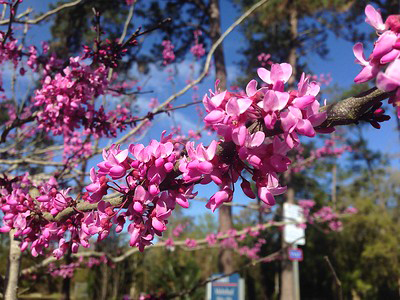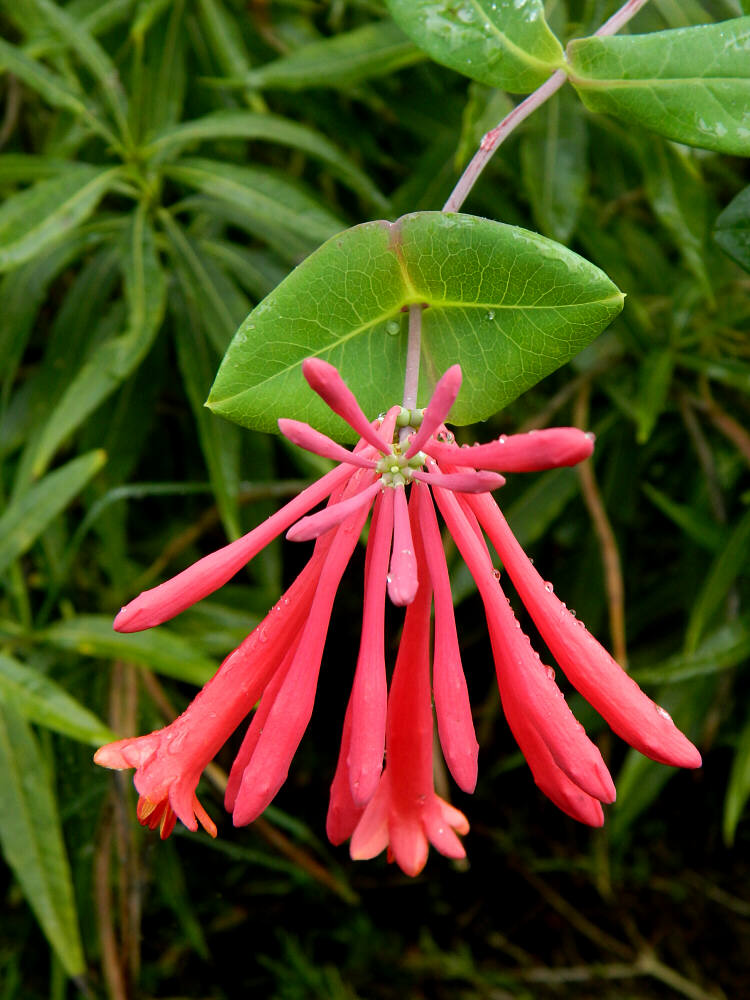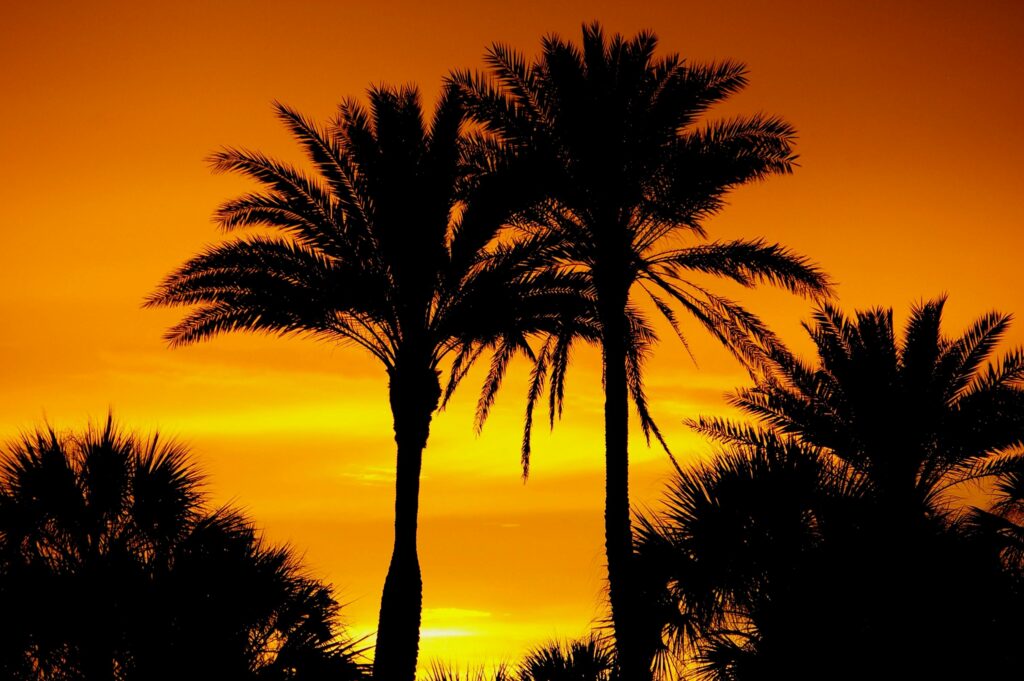Florida’s year-round sun invites lush landscaping, but many popular ornamentals need constant watering, fertilizer, or pest control. Native plants flip that script. Evolved for the Sunshine State’s sandy soils, monsoon summers, and salt breezes, they flourish with less fuss and feed local wildlife in the bargain. Below you’ll find 24 tested natives—split into trees, shrubs, vines, grasses, and wildflowers—along with planting advice and expert links so you can design a low-maintenance, eco-friendly yard.
Quick reference: All botanical names are the straight species, not cultivars, so you get full wildlife value.
Why Go Native?
- Lower inputs. Once established, natives sip rainfall and shrug off heat.
- Wildlife buffet. Florida’s butterflies, birds, and pollinators evolved alongside these plants.
- Pest resistance. Adaptations to local insects mean fewer chemical sprays.
- Resilience. From hurricane winds to drought, natives bounce back faster than many imports.
For a deeper dive, see the UF/IFAS Native Plant overview Gardening Solutions.
Know Your Region
Florida spans USDA Zones 8–11 and three moisture regimes: Panhandle pinewoods, peninsula sandhills, and coastal hammocks. Before planting, match each species’ native range to your county. The UF Florida-Friendly Plant Guide lets you sort by zone and light level ffl.ifas.ufl.edu.
1. Native Trees: The Landscape Backbone

| Common Name | Height | Best Region | Seasonal Perks |
|---|---|---|---|
| Southern live oak (Quercus virginiana) | 60–80 ft | Statewide, coastal tolerant | Massive shade, acorns for wildlife |
| Redbud (Cercis canadensis var. floridana) | 20 ft | North & Central FL | Pink spring bloom Gardening Solutions |
| Chickasaw plum (Prunus angustifolia) | 15 ft | Throughout FL | Early nectar source, edible fruit |
| Simpson’s stopper (Myrcianthes fragrans) | 15 ft | Central & South FL | Fragrant white flowers, orange berries Southern Living |
| Bald cypress (Taxodium distichum) | 50–70 ft | Wet sites statewide | Iconic “knees,” russet fall color |
Planting tip: Dig a hole twice the root ball width but no deeper; Florida’s sandy soils collapse if over-dug. Water weekly the first dry season.
2. Shrubs & Small Trees: Structure + Color
| Shrub | Mature Size | Light | Wildlife Benefit |
|---|---|---|---|
| Firebush (Hamelia patens) | 6–12 ft | Full | Hummingbird magnet Better Homes & Gardens |
| Beautyberry (Callicarpa americana) | 6 ft | Part shade | Fall clusters feed songbirds |
| Walter’s viburnum (Viburnum obovatum) | 12 ft or sheared hedge | Sun/part | Spring nectar & berries |
| Coontie (Zamia integrifolia) | 3 ft, cycad | Sun/part | Larval host for atala butterfly |
| Muhly grass (Muhlenbergia capillaris) | 3 ft | Full | Pink fall plumes, erosion control |
Design idea: Layer shrubs in drifts—firebush at rear for height, beautyberry mid-bed, muhly grass as edging. The staggered bloom times deliver color from spring through fall.
3. Flowering Vines for Chain-Link or Pergolas
(Pair vines with a support; untrained stems sprawl.)
| Vine | Zone | Growth Habit | Highlight |
|---|---|---|---|
| Coral honeysuckle (Lonicera sempervirens) | 4–9 | Twining | Red tubes feed hummingbirds |
| Passionflower (Passiflora incarnata) | 6–9 | Tendrils | Host for Gulf fritillary butterfly |
| Virginia creeper (Parthenocissus quinquefolia) | 3–9 | Adhesive pads | Crimson fall foliage |
Train stems through chain-link or onto a trellis. Cut back by one-third each February to keep growth in bounds without sacrificing blooms.
Coral Honeysuckle:

4. Groundcovers & Grasses: Living Mulch
| Groundcover | Sun | Notable Trait |
|---|---|---|
| Sunshine mimosa (Mimosa strigillosa) | Full | Pink puff blooms, tolerates foot traffic |
| Frogfruit (Phyla nodiflora) | Sun/part | Larval host for buckeye butterflies |
| Oakleaf hydrangea (Hydrangea quercifolia) | Part shade (North FL) | Bold leaves, white blooms |
Swap thirsty turf near tree roots for these natives; they reduce mowing and feed pollinators.
5. Wildflowers: Easy Pops of Color
| Wildflower | Bloom Season | Soil Needs | Note |
|---|---|---|---|
| Coreopsis (Coreopsis leavenworthii) | Spring–summer | Average | Florida’s state wildflower |
| Blanketflower (Gaillardia pulchella) | Year-round South FL | Sandy | Self-seeds politely |
| Swamp sunflower (Helianthus angustifolius) | Fall | Moist | Yellow wall of cheer Gardening Solutions |
| Black-eyed Susan (Rudbeckia hirta) | Summer | Well-drained | Great for cutting gardens |
Broadcast seed blends in November; cool temperatures and winter rains germinate seedlings by early spring.
How to Install a Florida-Native Bed (5 Steps)
- Mark the bed. Use garden hose to outline curves; remove existing grass with a flat shovel.
- Loosen soil, don’t replace it. Natives prefer local mineral make-up. Break the top 6 inches, rake away debris.
- Add 2-inch compost layer to jump-start microbes—especially in new subdivisions with subsoil top-dressed.
- Arrange plants by mature size—trees back, shrubs middle, flowers front. Follow spacing guidelines; crowding breeds mildew.
- Mulch 2–3 inches with pine straw or shredded leaves. Avoid cypress mulch—it removes habitat elsewhere.
Water daily for the first two weeks, then taper to twice weekly until the first hard rain. After six months, natives often survive on rainfall alone.
Maintenance: Easier Than You Think
- Pruning: Native shrubs bloom on new wood; trim firebush and beautyberry in February for compact shape.
- Fertilizer: Skip it unless a soil test flags severe deficiency. Over-fertilizing pushes weak, pest-prone growth.
- Irrigation: Deep-soak trees during year-one drought spells, then stop.
- Pests: Let beneficial insects patrol. If caterpillars skeletonize passionflower, thank them—they’re future butterflies.
- Weeds: Mulch yearly. A thick 3-inch layer stifles most invaders.
Design Inspiration & External Resources
- UF/IFAS Native Plant Database – Browse by light, soil, region. Great photos and fact sheets. sfyl.ifas.ufl.edu
- Florida-Friendly Plant Guide (app & web) – Sort 400+ natives and Florida-friendly exotics by color, height, and moisture. ffl.ifas.ufl.edu
- Beginner landscape tips – UF Polk County Extension outlines design basics for native yards. What’s Happening Around Florida
Bookmark these for site-specific questions like “Will Simpson’s stopper handle brackish spray?” (Answer: yes).
Sample 100-Square-Foot Native Starter Plan
| Layer | Plants (quantity) | Spacing | Seasonal Interest |
|---|---|---|---|
| Canopy | 1 Chickasaw plum | Center | March blossom, fruit for birds |
| Midstory | 2 Walter’s viburnum, 3 firebush | 3–4 ft | Viburnum spring bloom; firebush summer–fall |
| Understory | 5 muhly grass clumps | 2 ft | Pink fall plumes |
| Edge | 6 blanketflowers, 6 coreopsis | 1–1.5 ft | Color April–October |
| Accent vine | Coral honeysuckle on 6-ft trellis | Fence | Year-round greenery, red tubes |
I installed this mix in a rental property; after the second rainy season it needed only one mulch refresh and a light prune.
Frequently Asked Questions
Will natives look messy?
Thoughtful spacing, mass plantings, and defined edges keep native beds tidy. Use contrasting textures—fine muhly grass beside bold beautyberry—for designer polish.
Can I grow natives in containers?
Absolutely. Dwarf firebush, muhly grass, and passionflower thrive in 15-gallon pots with well-drained mix.
Are all Florida natives deer-proof?
Few plants are deer proof, but wax myrtle, coontie, and Simpson’s stopper are deer-resistant and seldom browsed.
Where can I buy natives?
Seek local native nurseries or the Florida Association of Native Nurseries (FANN) list. Big-box stores carry some, but verify botanical names on tags.
Final Thoughts
Choosing Florida native plants isn’t just a trend; it’s a resilient, wildlife-friendly way to garden that respects the state’s unique ecosystems. Start with one bed or swap turf along the driveway. Mix high-impact flowers like blanketflower with structure plants such as live oak or Simpson’s stopper, and your yard will hum with life while trimming water bills.
Ready to dig in? Grab the Florida-Friendly Plant Guide, sketch your sun map, and let these 24 natives turn your landscape into a true slice of Florida’s natural beauty.



